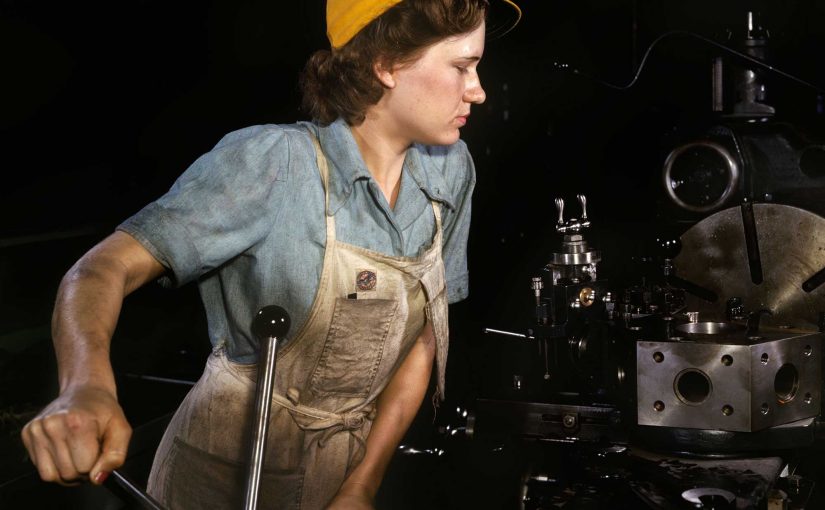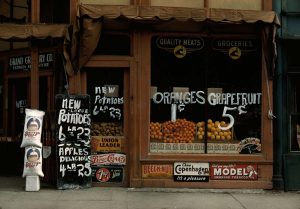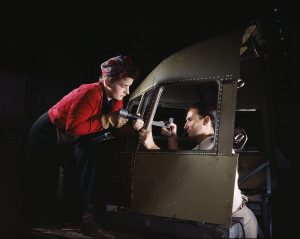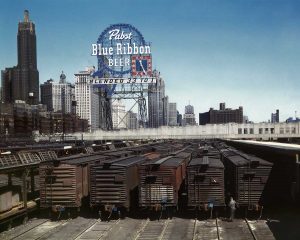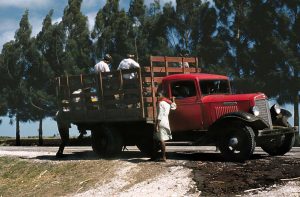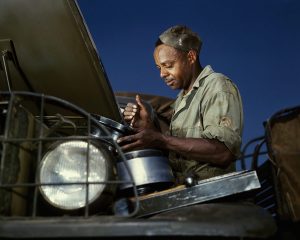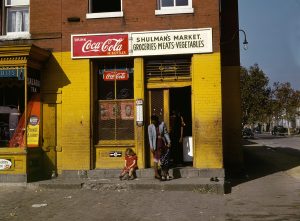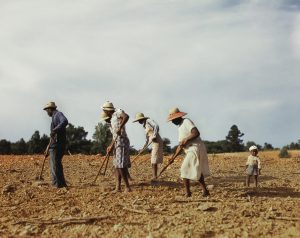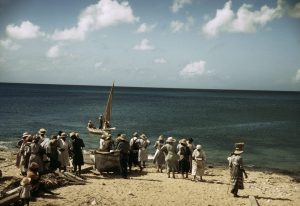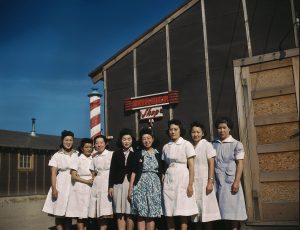Image: Howard R. Hollem (died 1949)
Lathe Operator, Consolidated Aircraft Corporation, Fort Worth, Texas, October, 1942
Digital ink print from a Kodachrome transparency, 91/2 x 11 inches
FSA/OWI Collection, Library of Congress, Washington, DC
January 25–April 28, 2019
Atrium Gallery, Marshall Fine Art Center
Opening Reception: Friday, January 25, from 5:00 p.m. to 7:00 p.m. in the gallery
Hours
Mon–Fri: 10:00 a.m.–5:00 p.m.
Weekends: 12:00–5:00 p.m.
The Farm Security Agency (FSA) and the Office of War Information (OWI) may be best known to art lovers for their small but influential photography program, which documented, between 1935 and 1944, life during the Depression and World War II. The most famous images from that program—“Migrant Mother” by Dorothea Lange, “Steel Mill and Graveyard in Bethlehem” by Walker Evans—use black-and-white photography to document post-Depression poverty, joblessness, and suffering.
But the FSA and OWI also commissioned some of the earliest color photography ever for this project. (Eastman Kodak introduced Kodachrome transparency film, creating the first manufacturing process to produce full-color-spectrum photographs, in 1936.) These Kodachrome photographs represent an unexplored history of photography. That they were lost due to bureaucratic misfiling until the ’70s—when color photography was more accepted as an art form, following William Eggleston’s 1976 exhibition at New York’s Museum of Modern Art—only serves to make them more exceptional.
Haverford College’ Atrium Gallery will debut 50 of the FSA/OWI’s 1,616 color photographs, newly restored and printed from high-definition digital scans made from Kodachrome originals in the Library of Congress’ collection, in a new exhibit, FSA/OWI Collection from the Library of Congress: America Photographed in Color 1939-1943. Made by photographers Russell Lee, Marion Walcott Post, John Vachon, Jack Delano, and Alfred Palmer, among others, these color images document America as it emerged from an economic depression and began preparations for war. They show little-seen aspects of workers’ lives and industries, as do Palmer’s photographs of aviation plants and the war efforts of women workers, as well as the scope and diversity of regions and people across America, from California to the Deep South to Puerto Rico and the U.S. Virgin Islands.
Many of the exhibit’s photographs have been printed as paper prints for the first time, as their originals exist only as positive color transparencies. Collected and displayed together, these rare and exceptional photographs tell the story of America via the medium we still use to this day—color photography—and therefore, represents the first time we saw ourselves as we do today.
FSA/OWI Collection from the Library of Congress: America Photographed in Color 1939-1943 will be on view Jan. 25 through April 28, at Haverford College’s Atrium Gallery in Marshall Fine Arts Center. An opening reception will be held Friday, Jan. 25, from 5:00 p.m. to 7:00 p.m. in the gallery.
For more information, contact Audrey A. and John L. Dusseau Professor of Humanities William Earle Williams at wwilliam@haverford.edu.
